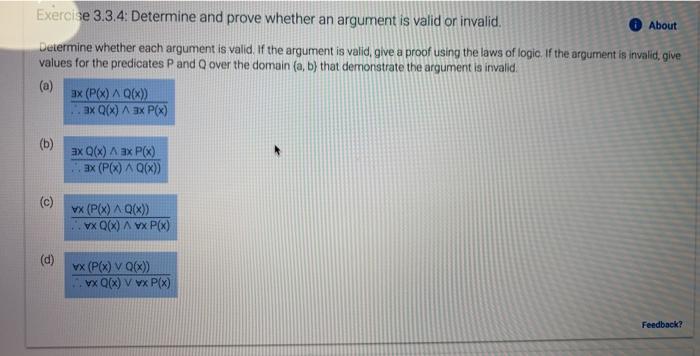Answered step by step
Verified Expert Solution
Question
1 Approved Answer
Prove that the given argument is valid. First find the form of the argument by defining predicates and expressing the hypotheses ar the conclusion using
Prove that the given argument is valid. First find the form of the argument by defining predicates and expressing the hypotheses ar the conclusion using the predicates. Then use the rules of inference to prove that the form is valid. (a) The domain is the set of musicians in an orchestra. Everyone practices hard or plays badly (or both). Someone does not practice hard. .. Someone plays badly. (b) The domain is the set of people who live in a city. Linda lives in the city. Linda lives in the city. Linda owns a Ferrari. Everyone who owns a Ferrari has gotten a speeding ticket. .. Linda has gotten a speeding ticket. (c) The domain is the set of all paintings. All of the paintings by Matisse are beautiful. The museum has a painting by Matisse. .. The museum has a beautiful painting. (d) The domain is the set of students at an elementary school. Every student who has a permission slip can go on the field trip.

Step by Step Solution
There are 3 Steps involved in it
Step: 1

Get Instant Access to Expert-Tailored Solutions
See step-by-step solutions with expert insights and AI powered tools for academic success
Step: 2

Step: 3

Ace Your Homework with AI
Get the answers you need in no time with our AI-driven, step-by-step assistance
Get Started


